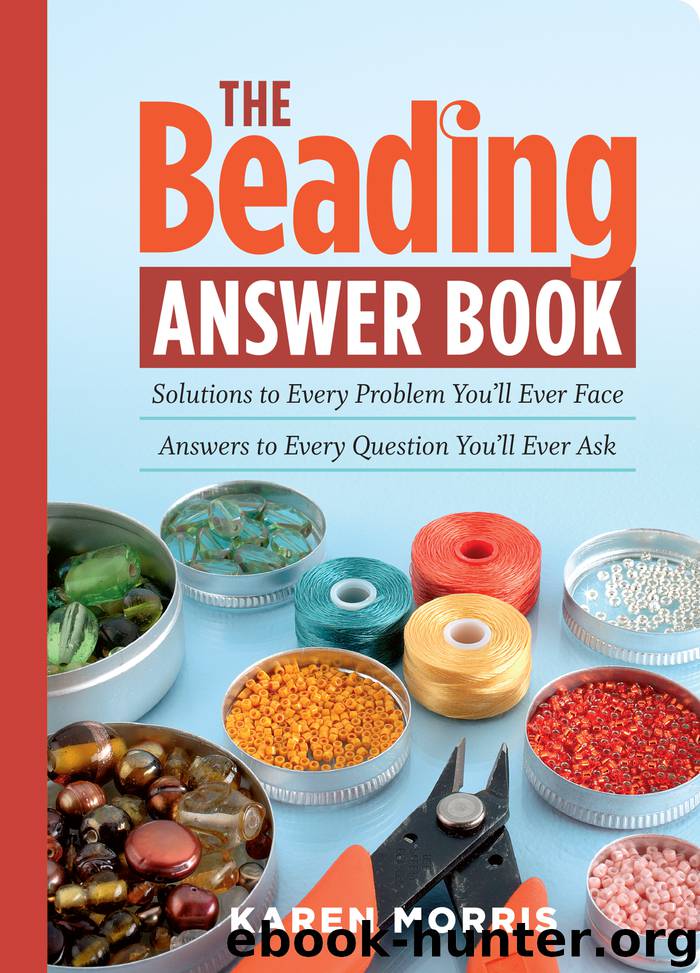The Beading Answer Book by Karen Morris

Author:Karen Morris
Language: eng
Format: epub
Publisher: Storey Publishing, LLC
Published: 2008-12-19T05:00:00+00:00
Option 2
1. Screw a cup hook into a door frame (in your work room, laundry room, or another inconspicuous place).
2. Place the loop of the wire on the cup hook.
3. Secure the ends in a pin vise and twist the wire while pulling the pin vise firmly away.
Whichever method you choose, be careful not to twist too much, especially with thinner gauges, or the wire will snap.
Wire Findings
Q: Tell me about the wire rings I’ll need.
A: Several types of rings are used in jewelry making. These are the most commonly used wire rings:
Jump ring. A loop made of wire that’s used to join jewelry parts together. In fine jewelry, jump rings are often soldered closed so they are more secure and can’t be pulled open. Since beaders seldom bother with soldering, this type of ring is not the best choice when joining to thread, which may work its way through the opening.
Soldered jump ring. A jump ring that’s been soldered shut, which is perfect to use whenever the ring doesn’t need to open, such as for a necklace closure where it will be strung and crimped.
Split ring. A ring made of wire wrapped around twice, like a tiny key ring. This type of ring is more secure than an open jump ring, especially when used with thread. Split rings are available in both round and oval shapes. Because split rings can be difficult to open and because the wire is thin and easy to distort, there are split-ring pliers and tweezers available that make it easier to open and hang onto split rings. (See Pliers and Cutters).
Download
This site does not store any files on its server. We only index and link to content provided by other sites. Please contact the content providers to delete copyright contents if any and email us, we'll remove relevant links or contents immediately.
On Writing A Memoir of the Craft by Stephen King(4213)
The Doodle Revolution by Sunni Brown(4043)
A Simplified Life by Emily Ley(3572)
Mummy Knew by Lisa James(3166)
Marijuana Grower's Handbook by Ed Rosenthal(3119)
Paper Parties by Erin Hung(3040)
Better Homes and Gardens New Cookbook by Better Homes & Gardens(2954)
Figure Drawing for Artists by Steve Huston(2799)
Draw Your Day by Samantha Dion Baker(2708)
The Genius of Japanese Carpentry by Azby Brown(2609)
Japanese Design by Patricia J. Graham(2556)
Lions and Lace by Meagan Mckinney(2494)
Dangerous Girls by Haas Abigail(2469)
The Curated Closet by Anuschka Rees(2385)
Zero to Make by David Lang(2348)
How to Make Your Own Soap by Sally Hornsey(2339)
The Wardrobe Wakeup by Lois Joy Johnson(2235)
The Code Book by Simon Singh(2209)
The Checklist Manifesto by Atul Gawande(2204)
